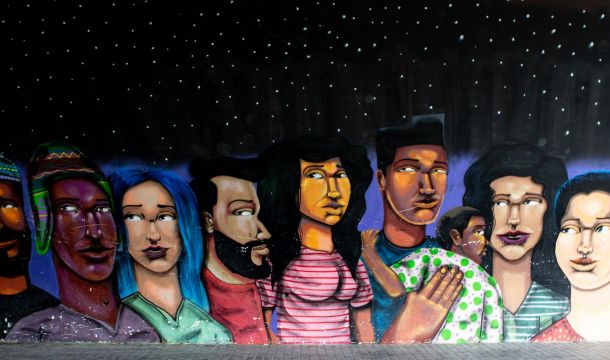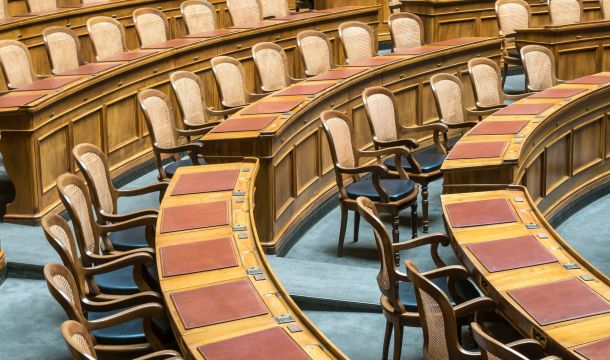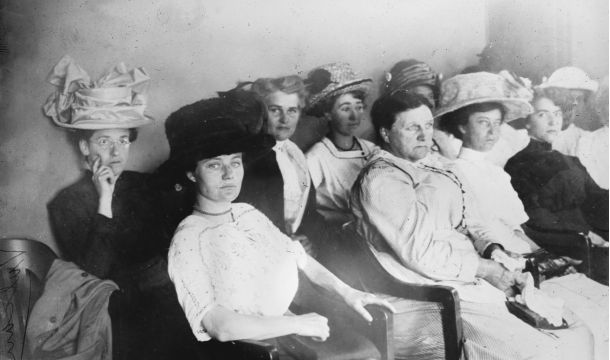Days of Flags and Rainbows - Does Your Office Have a Policy Governing Office Decor?
In the last month, high profile news events have demonstrated the power of symbols to inspire strong reactions - both positive and negative. For example, the display of the confederate flag evokes feelings of "heritage" or "racism," depending on the background of the viewer. The rainbow symbol of gay pride has been widely displayed to celebrate the U.S. Supreme Court decision of marriage equality. Yet marriage equality is contrary to the religious views of others. What happens when employees display these or other politically and/or emotionally charged symbols in the workplace? Should employees be allowed to display any politically charged symbols, photographs, memes, or texts in the workplace? From the perspective of the management side employment attorney, the answer is probably not, for both legal and practical reasons.
From a legal perspective, an employer’s allowance of the posting of politically charged symbols by employees is akin to placing a target on the employer for a lawsuit. The symbols posted by an employee may be used as evidence of the company’s attitude toward race or gender or any other protected category, even if they do not truly reflect the company’s corporate philosophy. Earlier examples of problematic posted materials are calendars containing photos of scantily clad, seductively posed women. There calendars were often distributed by vendors and posted in conspicuous places in all-male or predominantly male workplaces. As the law forbidding sexual harassment has evolved, the majority of employers now recognize that such calendars can be considered offensive to some women, and the calendars can be used as very compelling visual evidence against the company in a sexual harassment lawsuit. As a result, these calendars are no longer posted in many workplaces.
Employers face a similar issue with confederate flag imagery in the workplace. Many African-Americans (and others) consider the confederate flag to be a symbol of racism. An employer that allows employees to post such an image, or takes no action to prevent the posting of such an image, in the workplace runs the risk of seeing that image, or a photo of it, as evidence in a race discrimination lawsuit.
The rainbow imagery presents a different dilemma for the employer. One employee’s gay pride image may offend another employee’s strongly held religious beliefs. Does the employer then allow the religious employee to post religious materials that denounce same-sex marriage? The most practical solution is to enact a uniform workplace décor policy that allows neither to be posted in the workplace. Such a policy will address how employees can, and cannot decorate their workspaces. The policy may provide that the only personal items an employee may display in his/her office or on a desk are photographs of family, friends or pets. The company may even consider how many or how large the photographs may be. The display of any other symbols or items can lead to discipline, up to, and including discharge. Alternatively, a workplace décor policy may prohibit the display of any matter that could be considered "offensive" to other employees. This type of policy is less restrictive yet also more subjective, and it requires the diligence of a designated management or human resources official to make the ultimate determination as to what is or is not considered "offensive." As in the case of all workplace policies, the company must be consistent in the enforcement of workplace décor policy. However, even the drafting of a provision against "offensive" displays raises controversial legal issues, both in drafting and in application. The drafting portion pertains to controversial National Labor Relations Board (NLRB) guidance on overbroad company policies that might "chill" legitimate union or other concerted activities by employees. The theory is that a policy can be so broad as to prohibit or at least discourage employees from engaging in lawfully-protected activities such as supporting a political candidate on labor-backed issues, or engaging in some sort of protest against management actions pertaining to the employment relationship. Further, in application, an employee may wish to display religiously-based symbols such as a statue of Jesus. The answer to these type issues is not that appropriate rules cannot be drafted, but only that they must be drafted and/or reviewed by competent labor relations counsel.
In addition, there are the practical considerations of employee morale and company image on social media that favor the implementation of a workplace décor policy. While some employees may feel that their "freedom of expression" is being limited by such a policy, the company has the right to control what is displayed on its premises. Furthermore, the display of items that potentially offends a group of people is likely to undermine the morale and productivity of workers who belong to that group.
Finally, companies need to be aware of the power of social media to hold a company responsible for something posted by an individual employee. A recent example of this is the controversy involving the clothing manufacturer Lilly Pulitzer. A magazine’s photo tour of the company’s corporate headquarters showed two cartoons drawn by a Lilly Pulitzer employee that have been characterized as "fat-shaming." One read "Just another day of fat, white, and hideous…you should just kill yourself." The other read "Put it down, carb-face." Pictures of the sketches were spread though social media, leading some consumers to call for boycotts of the brand, and the company to issue an apology for its employee’s actions. Keep in mind that with the ubiquity of camera phones, anyone—an employee (especially a disgruntled one), vendor, visitor, service person-- can take a photo of a potentially offensive image in a workplace and post it to a number of social media sites, where it can then be re-posted by others. When that happens, chances are that the image will be identified with the company, and not the individual employee who posted it.
In conclusion, many companies may wish to consider implementing a policy that limits the types of images and items that employees can display on the workplace premises. Such a policy can prevent litigation or a morale or public relations nightmare. In addition to the policy, it is recommended that management and/or human resource officials regularly check employee workspaces to ensure that the policy is being followed. Such a policy can then be appropriately put into the company’s equal employment and harassment policies, as putting the policy in the context of prohibitions against unlawful practices provides additional protection from NLRB claims that the policy is overbroad.
Related Content
Get Email Updates

The EEOC and DOJ Issue Guidance on DEI

Considerations When Government Officials Show Up and Request to Meet with Individual Employees

How Jurors Evaluate the Fairness of an Employer’s Actions

Some of the Controversial Issues Currently Being Faced by Employers in Light of Recent Developments

Frequently Asked Questions About Recent Immigration-Related Actions



